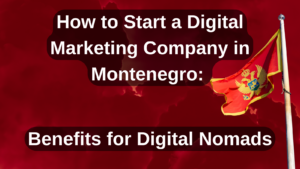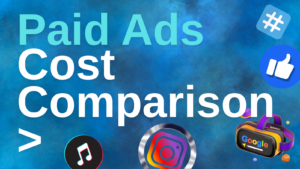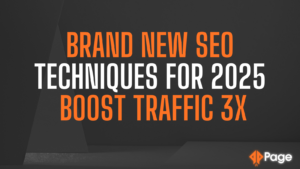A critical strategy for businesses looking to maximize their online presence and return on investment involves optimizing digital ad spend across multiple channels. As digital landscapes evolve, marketers must navigate through an array of platforms, each offering unique opportunities and challenges. This guide delves into strategies for allocating ad budgets effectively, ensuring that every dollar spent contributes to achieving your marketing objectives.
Strategic Allocation of Digital Ad Spend
Navigating the allocation of digital ad spend requires a methodical approach, starting with the establishment of clear, measurable marketing objectives. Are you aiming for increased brand awareness, lead generation, or direct sales? The answer will significantly influence where and how you allocate your budget. Understanding your target audience is just as crucial. Demographic data, online behavior patterns, and preferences inform not only the choice of channels but also the crafting of messages and creatives that resonate with your audience. This tailored approach ensures that your ad spend is not just a cost but an investment towards achieving specific business outcomes.
Allocating your budget effectively also means recognizing the fluid nature of digital trends and consumer behaviors. Flexibility to shift spend between channels based on performance data and changing market dynamics is key. This agility allows businesses to capitalize on emerging opportunities and mitigate risks associated with underperforming channels. Moreover, integrating a mix of short-term performance marketing tactics with long-term brand-building strategies can create a balanced advertising portfolio that nurtures immediate conversions while cultivating lasting brand equity.
Dynamics of Various Platforms
The landscape of digital advertising platforms is as diverse as it is dynamic. Search engines, being at the forefront of consumer intent, offer a direct pathway to users actively seeking information, products, or services. Optimizing for search not only involves targeted keyword bidding but also ensuring your landing pages are primed for conversion. On the other hand, social media platforms, with their vast user bases and sophisticated targeting capabilities, allow brands to engage with potential customers in a more personal and interactive manner. These platforms are not just about broad reach; they enable precise segmentation and targeting, allowing for highly personalized ad experiences.
Display networks and video platforms further enrich the digital advertising mix by offering visual and engaging content formats that can capture attention across various online destinations. Display ads can retarget visitors to nudge them back towards your site, while video ads can convey complex messages in an engaging and memorable way. The trick lies in crafting content that aligns with the consumption habits and preferences of the audience on each platform. For instance, shorter, snappier videos may perform better on social media, whereas longer, informative videos could be more suitable for platforms like YouTube.
Each channel’s unique strengths and weaknesses necessitate a strategic approach to budget allocation. For example, investing in search engine advertising might yield immediate returns for a new product launch, while social media could be more effective for building community around a brand. Similarly, display and video advertising could be leveraged for retargeting purposes, turning interest into action. The optimal mix varies by business, product, and campaign objective, underscoring the importance of a customized strategy informed by robust data analysis and a deep understanding of each platform’s role within the broader marketing ecosystem.
Data-Driven Decision Making
In the realm of digital advertising, the ability to make informed decisions based on data analytics sets apart successful campaigns from the rest. This approach hinges on the meticulous analysis of campaign performance metrics, such as click-through rates, conversion rates, and engagement levels. These metrics serve as a compass, guiding marketers on where to invest their ad spend for maximum impact. However, the true power lies in going beyond surface-level insights. By delving deeper into data, marketers can uncover patterns and trends that reveal consumer behavior and preferences, allowing for a more strategic allocation of resources.
Advanced analytical tools and technologies play a pivotal role in this process. Artificial Intelligence (AI) and machine learning algorithms offer the capability to sift through vast amounts of data at an unprecedented speed, identifying opportunities for optimization that might be invisible to the human eye. These technologies can forecast campaign performance based on historical data and current market trends, enabling marketers to preemptively adjust their strategies. More importantly, they provide the agility to respond to real-time feedback, reallocating budgets to high-performing channels and tactics instantaneously. This dynamic approach ensures that digital ad spend is not just efficient but also adaptable, capable of evolving with changing market conditions and consumer behaviors.
ROI Amplification through Targeted Audiences
The cornerstone of any successful digital marketing strategy is the ability to target the right audience with precision. The evolution of advertising platforms has brought about sophisticated targeting options that allow marketers to define their audience with incredible detail. From basic demographics to intricate behavioral patterns, these options enable the creation of highly customized ad campaigns designed to resonate with the intended audience. The development of detailed buyer personas is crucial in this context. These personas, crafted from both market research and real data on existing customers, provide a blueprint for identifying the most lucrative segments to target.
Utilizing platform-specific targeting tools enhances the ability to reach these segments effectively. Each platform, be it a social media network, a search engine, or a display network, offers unique targeting capabilities tailored to its particular ecosystem. For instance, social media platforms may excel in granular interest and lifestyle-based targeting, while search engines might offer superior intent-based targeting options. By leveraging these capabilities, marketers can ensure that their messages reach individuals who are not only more likely to be interested in their offerings but also at a stage in the buyer’s journey where they’re ready to engage or convert.
The direct correlation between targeted audience precision and digital ad spend efficiency cannot be overstated. Targeting the right audience minimizes waste, ensuring that every dollar spent is an investment toward engaging with potential customers who have a higher likelihood of taking the desired action. This focused approach significantly boosts campaign performance, driving up ROI and making every ad dollar count. In the competitive digital marketplace, where attention is a scarce commodity, the ability to capture and retain the right audience’s interest is invaluable.
Creation of Impactful Ad Content
Crafting ad content that strikes a chord with your audience is both an art and a science. It starts with a deep dive into understanding who your audience is, what they value, and the challenges they face. This knowledge forms the foundation of ad creatives that are not only visually appealing but also emotionally resonant. The power of a well-crafted message lies in its ability to evoke a response, whether it’s curiosity, excitement, or even a sense of belonging. For ads to be impactful, they must be more than just noticeable; they need to communicate value and relevance in a fraction of a second.
The customization of ad content extends beyond mere aesthetics. It involves tailoring the tone, language, and even the format to suit the platform and the preferences of its users. For instance, what works on a visual platform like Instagram might not hold the same appeal on LinkedIn, where a more professional approach is favored. The experimentation with different formats—from static images and compelling videos to interactive ads—plays a critical role in identifying what captures attention and drives action among your target demographics. This process of testing and learning is vital, as it uncovers insights into the types of content that resonate most, informing future creative decisions and strategies.
Continuous Optimization and Testing
The dynamic nature of digital advertising demands that campaigns are not set in stone but are instead seen as living entities, subject to evolution and refinement. Continuous optimization and testing are at the heart of this approach. A/B testing, or split testing, is a methodical process where two variations of an ad are compared to determine which performs better in terms of specific metrics such as click-through rate (CTR) or conversion rate. This iterative process extends beyond ad creatives to encompass every element of the campaign, including targeting parameters and the design of call-to-action (CTA) buttons.
The goal of continuous testing is not just to identify the winning variation but to foster a deeper understanding of what elements contribute to successful engagement and conversion. This knowledge is invaluable, as it guides the allocation of ad spend towards tactics and creatives that have proven their worth, thereby optimizing overall campaign performance. The agility to adapt based on real-time feedback ensures that marketing efforts remain aligned with audience preferences and behaviors, maximizing the return on investment.
Efficiency through Technological Advancements
In an era where speed and efficiency are paramount, leveraging technology to streamline the ad optimization process is a game-changer for marketers. Automation tools and ad management platforms are revolutionizing how campaigns are run, offering capabilities that enhance both performance and productivity. These tools automate routine tasks such as bid management and the pausing of underperforming ads, enabling a more efficient allocation of resources. They also allow for the dynamic reallocation of budgets based on performance criteria predefined by the marketer, ensuring that ad spend is constantly optimized for the best possible outcomes.
The integration of artificial intelligence (AI) and machine learning into these platforms further enhances their capability by enabling predictive analytics and intelligent recommendations. These advancements not only minimize the guesswork involved in campaign management but also free up marketers to concentrate on higher-level strategy and creative development. The result is a more streamlined, effective approach to digital advertising that not only saves time but also significantly improves campaign results. By embracing these technological solutions, marketers can stay ahead in the fast-paced digital landscape, ensuring their brands remain competitive and their advertising efforts yield the highest return.
Wrapping It Up
Optimizing digital ad spend across multiple channels requires a strategic approach grounded in data and a deep understanding of platform dynamics and audience behaviors. By leveraging technology and continuously testing and refining campaigns, businesses can ensure that their digital advertising efforts are both effective and efficient. As the digital marketing landscape continues to evolve, staying agile and informed will be key to maintaining a competitive edge.





